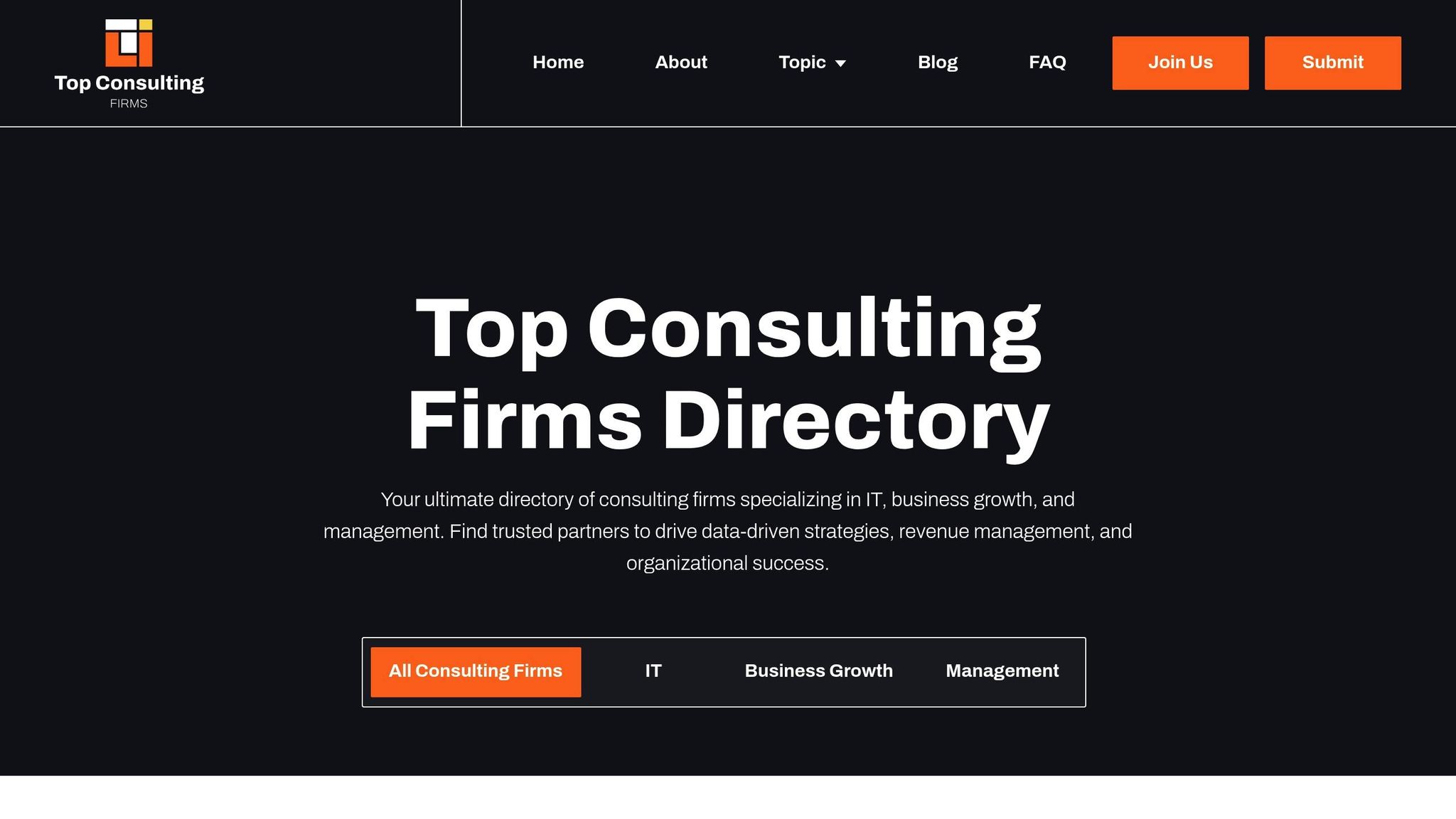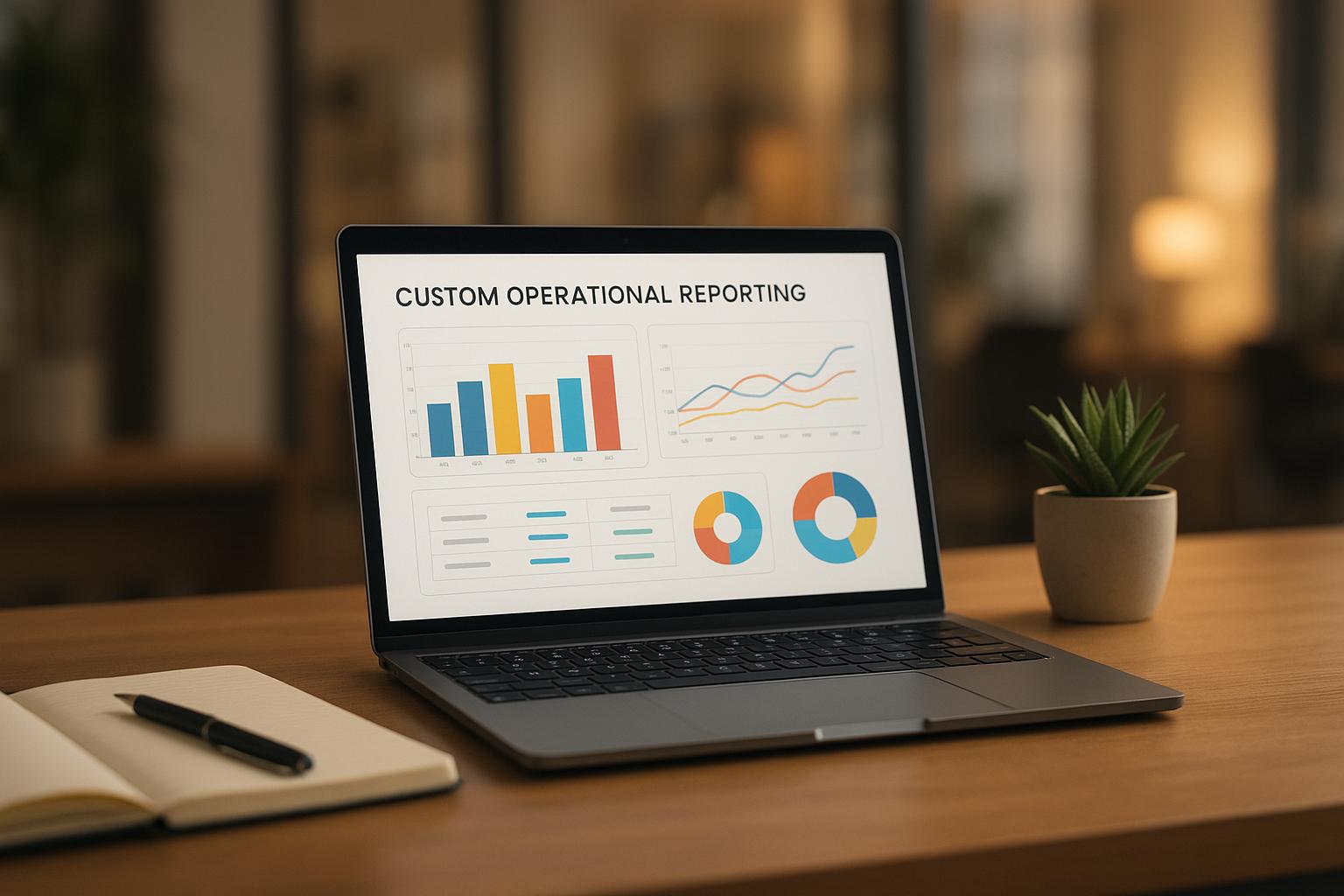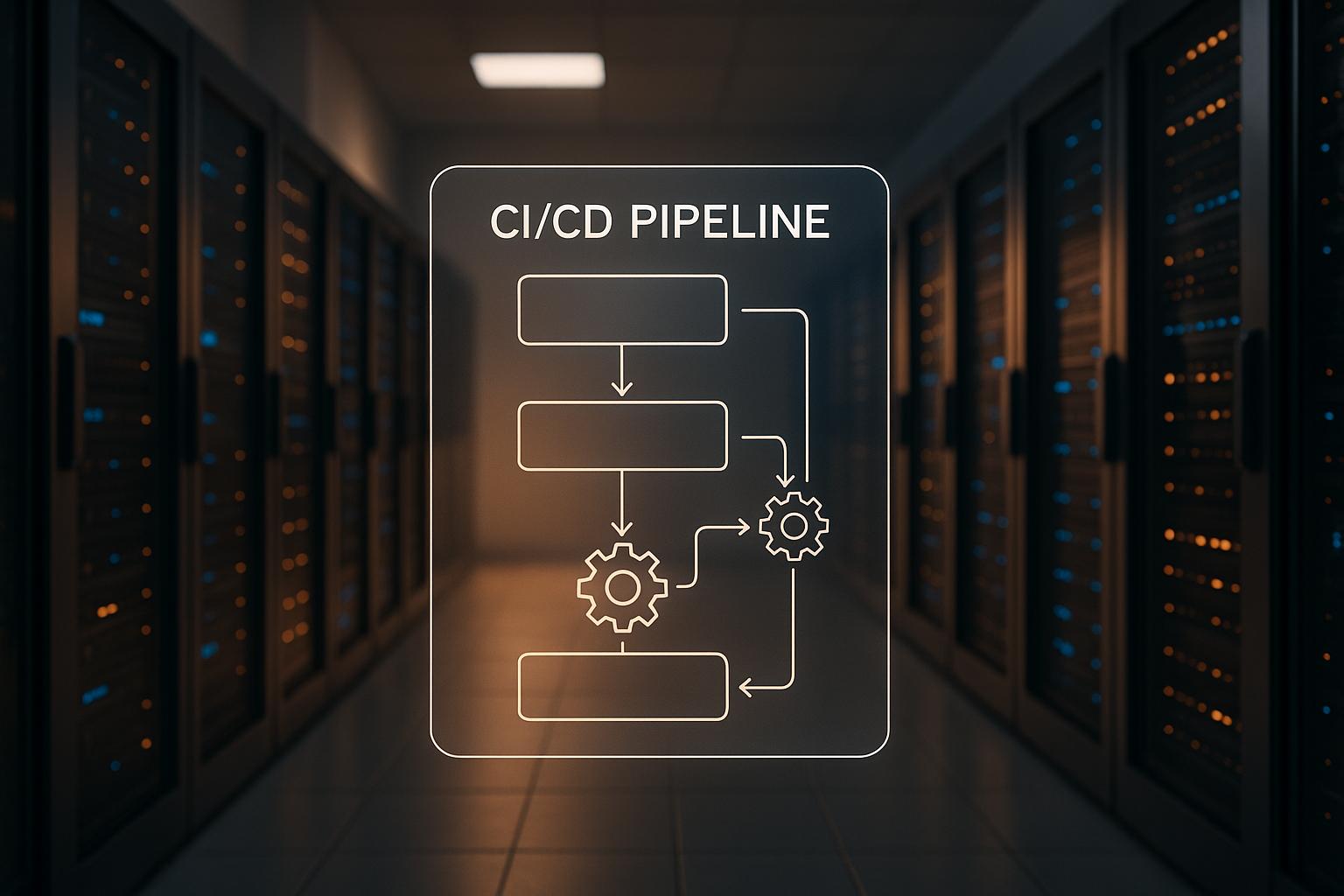Building a customer service training program is about equipping your team with the skills and knowledge they need to deliver exceptional customer experiences. Here’s how to do it:
- Understand Training Needs: Use customer feedback, performance data, and employee input to identify skill gaps and set specific, measurable goals.
- Focus on Key Skills: Prioritize communication, empathy, problem-solving, product knowledge, time management, and conflict resolution. Tailor training to each role, from frontline reps to technical support specialists.
- Deliver Effective Training: Use a mix of methods like e-learning, role-playing, and hands-on activities to ensure employees can apply what they learn. Customize content to reflect your business, products, and customer base.
- Track Progress and Improve: Measure success with metrics like customer satisfaction scores and employee performance. Gather feedback to refine and update the program regularly.
- Leverage Expert Resources: Consider consulting professionals to streamline implementation, enhance training quality, and align efforts with broader business goals.
The result? A confident, skilled team that meets customer expectations and supports business growth.
The Benefits and Strategies of Effective Customer Service Training
Step 1: Assess Training Needs and Set Business Goals
Start by evaluating how your team is currently performing and pinpointing specific areas for improvement. This step ensures your training efforts address real challenges and align with your business priorities. By gathering these insights, you can set clear, actionable training objectives that truly make a difference.
Review Feedback and Performance Data
The best training programs are based on solid data, not guesswork. Dive into multiple sources of information to get a complete picture of your team's performance.
Customer feedback is a goldmine of information about what’s working and what isn’t. Look at survey responses, online reviews, and support tickets. Pay attention to recurring issues - if customers frequently mention long wait times or unhelpful responses, those should be at the top of your training list.
Performance metrics add another layer of insight. Key stats like average response times, first-call resolution rates, and customer satisfaction scores can highlight trends that might not be obvious from customer feedback alone. For instance, a team with great satisfaction scores but poor first-call resolution rates might need more technical problem-solving training rather than communication skills.
Employee input is just as important, though it’s often overlooked. Your customer service team deals with the day-to-day challenges firsthand and can offer valuable insights into knowledge gaps or process inefficiencies. Use anonymous surveys or focus groups to learn where your team feels unsure or frustrated.
If available, analyze call recordings and chat transcripts. These real-world examples can uncover specific moments where better training could have improved the outcome. Look for patterns in how your team handles objections, escalates issues, or explains complex topics.
Set Clear Training Goals
Once you’ve gathered all the data, turn those insights into specific, measurable training objectives. Avoid vague goals - be precise so you can track progress and evaluate the program’s success.
Align training goals with business priorities to ensure your efforts support the company’s broader objectives. For example, if reducing operational costs is a focus, prioritize training that boosts first-call resolution rates to cut down on repeat contacts. If growth is the goal, consider training on upselling techniques or turning support calls into sales opportunities.
Make goals measurable and specific to clearly define success. Instead of saying, “reduce response times,” aim for something like, “cut average email response time from 24 hours to 12 hours within three months.” This clarity not only helps in designing the training but also proves its impact.
Balance hard and soft skill objectives when setting goals. Hard skills might include mastering new software or learning detailed product specs, while soft skills could involve improving empathy during tough conversations or enhancing active listening. Both are crucial for customer satisfaction but require different training methods.
Set realistic timelines based on the complexity of the skills involved. Technical skills might improve quickly with targeted sessions, but soft skills like emotional intelligence often need longer-term development and consistent reinforcement.
Finally, ensure that training goals resonate with each team member. Help them see how their personal development ties into the team’s success and the company’s overall goals. When employees understand their role in the bigger picture, they’re more likely to stay motivated and engaged throughout the training process. These well-defined goals will be the foundation for creating effective training content and evaluation methods in the next steps.
Step 2: Identify Required Customer Service Skills
Once you’ve set your training goals, it’s time to outline the specific skills your team needs to excel. These skills should directly influence customer satisfaction and drive business success. By creating a clear skill framework, every team member will understand what they need to master and how their role contributes to delivering outstanding service. Make sure these skills align with your training objectives to ensure the development efforts are focused and effective. Below are the key skills every customer service professional should develop.
Core Skills to Build
Regardless of the role or industry, certain skills form the backbone of excellent customer service. These core competencies are essential for quality interactions and should be prioritized in training programs.
Communication skills are at the top of the list because they impact every interaction. Effective communication involves active listening, expressing ideas clearly, and adapting to the customer’s needs. A skilled communicator can de-escalate tense situations, simplify complex information, and make customers feel valued and understood.
Empathy and emotional intelligence elevate service quality by helping representatives connect with customers on a human level. These skills allow agents to understand frustrations, tailor their responses to different personalities, and stay composed under pressure. Emotional intelligence also includes self-awareness, enabling agents to recognize when they need help or a break to maintain performance.
Problem-solving abilities are essential for resolving issues efficiently and creatively. This includes analyzing situations quickly, finding solutions within company guidelines, and knowing when to escalate problems. Representatives with strong problem-solving skills can often turn frustrated customers into loyal ones by finding thoughtful resolutions.
Product and service knowledge is the technical backbone of customer support. Agents must deeply understand the products or services they represent, including features, limitations, common challenges, and integrations. This expertise builds trust with customers and speeds up issue resolution.
Time management and multitasking are critical in fast-paced environments. Customer service professionals often juggle multiple channels, prioritize urgent matters, and manage their workloads while maintaining quality. These skills have a direct impact on efficiency and customer satisfaction.
Conflict resolution is another vital skill for turning negative experiences into positive ones. This includes calming upset customers, negotiating mutually acceptable solutions, and maintaining professionalism while showing genuine concern for the customer’s needs.
Map Skills by Role
Different roles require unique skill sets. While core skills are universal, specialized competencies vary depending on responsibilities. Tailoring training to each role ensures resources are used effectively and team members receive relevant instruction.
Frontline representatives need strong communication and problem-solving skills, as they handle the majority of routine inquiries and often serve as the first point of contact. Their training should emphasize product knowledge, company policies, and procedures. They also need to be adept at managing multiple communication channels, such as phone, live chat, and social media.
Technical support specialists require advanced product knowledge and troubleshooting expertise. While maintaining strong communication standards, their training should focus on solving technical problems, simplifying complex issues, and practicing patience during multi-step resolutions. They often need specialized knowledge of integrations, APIs, or configurations that frontline agents don’t typically handle.
Senior customer service representatives or team leads need all the foundational skills, plus leadership and mentoring abilities. These roles often involve handling escalated issues, so advanced conflict resolution and negotiation skills are critical. Training should also include coaching techniques, quality assurance processes, and decision-making within company guidelines. Additionally, they should learn to analyze trends in customer interactions to identify broader issues.
Customer success managers focus on building and maintaining long-term relationships. Their training should cover account management, strategic thinking, and business consultation. They need to understand customer goals, identify opportunities for growth, and foster partnerships that go beyond resolving immediate problems.
Specialized support roles, such as billing specialists or returns processors, require deep expertise in their specific areas. However, they must also maintain core service skills, like communication and empathy, to handle potentially frustrated customers dealing with financial or product issues.
When mapping skills to roles, think about career progression within your organization. Training should build on existing skills, allowing team members to grow into advanced roles. This not only boosts current performance but also supports employee retention by offering clear paths for advancement.
The goal is to match the depth and focus of training to each role’s responsibilities. For example, a frontline agent doesn’t need the same technical expertise as a specialist, but they do need to know when and how to escalate issues. A targeted approach like this improves efficiency and ensures every team member contributes effectively to service excellence.
Step 3: Create and Deliver Training Content
Once you've established your skills framework, the next step is to design training that connects theory to real-world application. The best training programs use a mix of methods and focus on practical ways employees can apply what they learn. Tailor everything to fit your company's specific needs.
Use Multiple Learning Methods
Different people learn in different ways, so it's smart to offer a variety of training methods. A blended learning approach works well because it reinforces ideas through multiple formats while accommodating diverse preferences.
- E-learning modules: Great for foundational topics like company policies, product details, and basic procedures. These self-paced courses let employees learn at their own speed. Adding interactive features like quizzes, drag-and-drop activities, and scenario-based questions keeps things engaging and helps test understanding.
- Instructor-led sessions: Perfect for complex topics that benefit from real-time discussion and feedback. These sessions are especially useful for soft skills like empathy, conflict resolution, and advanced problem-solving. Trainers can adapt content on the spot based on participant questions.
- Microlearning: Breaks down training into small, digestible lessons that employees can complete in 5-10 minutes. This is especially helpful for busy teams, like customer service reps, who need to fit learning into their daily schedules. Quick lessons on topics like refunds or new software features keep skills sharp.
- Video-based learning: Combines visuals and audio to demonstrate techniques clearly. For example, screen recordings can show how to navigate systems or handle specific interactions. Videos are particularly effective for technical training where seeing step-by-step processes is crucial.
A good sequence to follow is: start with e-learning for foundational knowledge, move to instructor-led sessions for skill development, and use microlearning for ongoing reinforcement. This progression builds a strong knowledge base and keeps skills fresh.
Include Hands-On Training Activities
While varied methods build knowledge, hands-on activities ensure employees can put that knowledge into action. Practical exercises help bridge the gap between learning and doing.
- Role-playing exercises: Allow employees to practice customer interactions in a safe setting where mistakes are part of the learning process.
- Scenario-based simulations: Create realistic situations your team might face. For instance, simulate interactions with an upset customer whose order was delayed or a technical user needing help with a complex issue. Include details like the customer's emotional state and possible solutions.
- Call shadowing and reverse shadowing: Pair new hires with experienced agents to observe real calls, then let them handle calls under supervision. This method eases the transition from training to live interactions.
- Case study workshops: Present real customer challenges your company has faced. Employees can analyze the situation, discuss decisions made, and explore alternative approaches. This builds critical thinking and helps them understand company policies in action.
- Peer feedback sessions: Pair employees to practice new skills and provide structured feedback to each other. This not only reinforces learning but also develops coaching and communication skills.
- Progressive skill building: Start with simple tasks like greeting customers or gathering information, then move to more challenging scenarios like handling complaints or managing escalations. Each level builds on the last, adding complexity over time.
Customize Content for Your Business
Generic training often falls flat because it doesn’t address the unique challenges of your business. Tailoring content ensures it aligns with the specific skills your team needs.
- Industry-specific focus: Make sure the training reflects your work environment and customer base.
- Product integration: Go beyond listing features - include common use cases, frequent questions, and typical problem scenarios.
- Customer personas: Develop profiles that represent your actual customers, including their demographics, communication styles, and common concerns.
- Channel-specific training: Address the nuances of different communication methods, whether it's email, phone, or chat.
- Company culture alignment: Incorporate your brand's values and voice into the training.
- Compliance and regulations: Weave these into the content so they’re part of the overall learning experience.
- Local market considerations: Adapt training for geographic differences, including communication preferences, regional regulations, and local business practices.
The goal is to make training feel directly relevant to your team's daily work. When employees see how lessons apply to their actual responsibilities, they engage more and develop skills faster.
sbb-itb-97f6a47
Step 4: Track and Improve the Program
Creating a training program is just the beginning - its long-term success depends on ongoing monitoring and improvement. Without tracking, it’s impossible to know whether the program is hitting its goals or where it might need adjustments. Regular evaluation is a cornerstone of any effective customer service training initiative.
Organizations that focus on employee development see 11% higher profitability and are twice as likely to retain their staff. Similarly, companies that emphasize service training report 10–15% higher customer satisfaction scores and enjoy up to 93% customer repurchase intent.
Set Up Measurement Metrics
To measure success effectively, you need a combination of hard data and direct feedback. The metrics you choose should align with your company’s goals and the specific objectives of your training program. Here are some key areas to focus on:
- Knowledge retention and skill application: Use post-training assessments, certification rates, and practical exercises to gauge how well employees retain and apply what they’ve learned. For instance, improved customer interactions can indicate successful skill application.
- Performance improvements: Track operational metrics like response times, first-call resolution rates, and the frequency of escalations. For example, if your training emphasizes product knowledge, you should see fewer calls being transferred to technical teams. If the focus is on communication skills, customer satisfaction scores should improve.
- Customer satisfaction metrics: Monitor indicators like CSAT scores, Net Promoter Scores (NPS), and repurchase rates before and after training.
Businesses that focus on customer experience grow revenue 1.7 times faster than those that don’t.
- Employee engagement indicators: Look at training completion rates, participation in optional learning, and feedback on the training itself. This is especially important since
55% of American workers say skill development opportunities would help them advance in their roles.
Implement performance dashboards to track these metrics in real time. Dashboards make it easier to identify trends and determine whether changes in performance are due to training adjustments or external factors.
Gather Feedback for Program Updates
While data shows what’s happening, feedback helps explain why. For example,
55% of service agents report needing better training to perform their jobs effectively.
This highlights the importance of listening to your team when refining your program.
Start by setting clear goals for feedback collection. Decide whether you’re evaluating the training content, delivery methods, or how well employees can apply what they’ve learned. This focus allows you to ask targeted questions and organize responses efficiently.
Gather input through post-training surveys, one-on-one interviews, manager observations, and customer feedback. Surveys might include questions like, "Were the training objectives clearly communicated?" or "Did you feel supported in applying the new skills?"
Act quickly on feedback. For example, if employees express dissatisfaction with peer-led training, consider offering on-demand e-learning as an alternative. Follow up with participants to show that their input is valued and leads to meaningful changes.
Customer feedback is equally critical. Monitor customer interactions, social media comments, and direct survey responses to see whether training updates are positively impacting the customer experience.
85% of decision-makers believe employee experience directly influences customer experience.
This connection means that employee challenges often mirror customer concerns.
When analyzing feedback, look for patterns rather than isolated comments. For instance, if both employees and customers highlight confusion about a specific process, it’s a clear signal that the training needs revision.
Finally, make continuous updates a priority. Customer needs and technology change rapidly, so your training program should adapt just as quickly. Regularly review performance metrics, quality assurance scores, and feedback from your team to stay proactive. These ongoing adjustments will prepare you to tap into expert resources in the next step.
Step 5: Work with Expert Resources for Better Results
While continuous improvement is key to any training program, bringing in expert resources can take your efforts to the next level. External consultants offer proven strategies and objective advice that can elevate your program’s effectiveness.
But let’s be clear - working with consultants doesn’t mean replacing your internal team. Instead, it’s about complementing your efforts. These partnerships can help you sidestep common challenges, speed up implementation, and ensure your training program aligns with industry standards right from the beginning.
Partner with Consulting Experts
Consulting firms that focus on customer service and organizational development bring a wealth of benefits to your training initiatives. They can offer fresh perspectives, uncover blind spots your internal team might miss, and adapt successful strategies from other industries to fit your specific needs.
These experts also bring a tech-savvy approach, helping you integrate modern training tools that simplify content creation and delivery. Plus, they provide tried-and-tested frameworks for tracking training effectiveness, giving you solid data to make smarter decisions.
While there’s an upfront cost to hiring consultants, their expertise often saves money in the long run by avoiding costly mistakes and speeding up the rollout process. They also help with change management, ensuring employees embrace the new program smoothly. Additionally, consultants can design scalable training systems that grow alongside your organization.
The next step? Finding the right consulting partner to match your needs.
Find Consultants Through Top Consulting Firms Directory

To make the most of these benefits, consider using a trusted resource like the Top Consulting Firms Directory. This platform connects businesses with leading consultants who specialize in areas like digital transformation, revenue growth, and strategic management - key elements for a successful training program.
For example, the directory features firms skilled in digital transformation, which is essential for modern training programs that rely on e-learning and data analytics. These experts can help you choose and implement the right tech tools to fit your goals and budget.
You’ll also find specialists in revenue growth and customer acquisition who understand how training impacts business outcomes. They can design programs that not only improve service quality but also drive measurable gains in customer retention and lifetime value.
Need help managing organizational change? The directory includes consultants with expertise in aligning training initiatives with broader business strategies. They can guide you through the human side of implementation while ensuring your program supports your company’s larger objectives. Data analytics experts are also available to set up systems that provide actionable insights throughout the training process.
When browsing the directory, focus on firms with experience in your industry or with organizations facing similar challenges. Detailed profiles make it easy to identify consultants who understand your unique situation and can offer tailored advice.
Conclusion: Key Steps for Building Your Training Program
Creating an effective customer service training program starts with understanding your team's needs and staying committed to ongoing improvement. By following these five steps - from identifying gaps to seeking expert guidance - you can build a program that delivers real results.
Start by assessing your training needs. Use tools like customer feedback, performance metrics, and clear goals to pinpoint where your team needs support. From there, define the specific skills required for each role in your organization, ensuring your training efforts are focused and relevant.
Next, decide on delivery methods that will keep your team engaged. Options like in-person workshops, hands-on exercises, and online learning platforms can be tailored to suit your business's unique needs. Customizing the content ensures the training aligns with your goals and delivers measurable outcomes.
Track progress with clear metrics and gather regular feedback to refine your program. Remember, training isn’t a one-and-done effort - it’s a continuous process that evolves with your business. Consistent evaluation will highlight areas for improvement and help you stay on track.
Finally, consider bringing in outside expertise. Partnering with experienced consultants can provide proven strategies and fresh ideas. Resources like the Top Consulting Firms Directory can help you find specialists in areas like digital transformation, revenue growth, and strategic management - experts who understand how training ties into broader business goals.
FAQs
What’s the best way to measure the success of a customer service training program?
To gauge the effectiveness of your customer service training program, keep an eye on key performance indicators (KPIs) such as Customer Satisfaction Score (CSAT), Net Promoter Score (NPS), and First Contact Resolution (FCR). These metrics offer a clear picture of how well your team is meeting customer needs and expectations.
It's also important to monitor operational changes, like a decrease in support ticket volume, quicker response times, and reduced effort required from customers to resolve their issues. On top of that, collecting qualitative feedback through surveys or interviews can uncover both successes and areas needing attention. By combining these metrics and insights, you'll get a comprehensive view of how your training program is performing.
What are the best ways to customize customer service training for my business?
To make customer service training truly effective, tailor it to address the specific challenges, products, and customer interactions unique to your business. Incorporating real-life scenarios and role-playing exercises based on your team’s daily experiences can make the training more practical and relatable.
It’s also important to align the training materials with your company’s goals and the expectations of your customers. Using interactive methods, such as hands-on activities or dynamic templates, can keep your team engaged and help reinforce lessons for long-term success.
How can I balance hard and soft skills in my customer service training program?
To find the right mix of hard skills (like mastering technical tools and systems) and soft skills (such as empathy, active listening, and problem-solving), it’s important to tailor your approach to your customer service team’s unique requirements. Hard skills help ensure accuracy and efficiency, while soft skills foster trust and build stronger connections with customers.
A well-rounded training program should cover:
- Technical expertise to help your team navigate tools, processes, and product details effectively.
- Interpersonal skills to improve communication, resolve conflicts, and strengthen emotional awareness.
Blending these skill sets equips your team to confidently manage various customer interactions while maintaining a professional and approachable demeanor.


